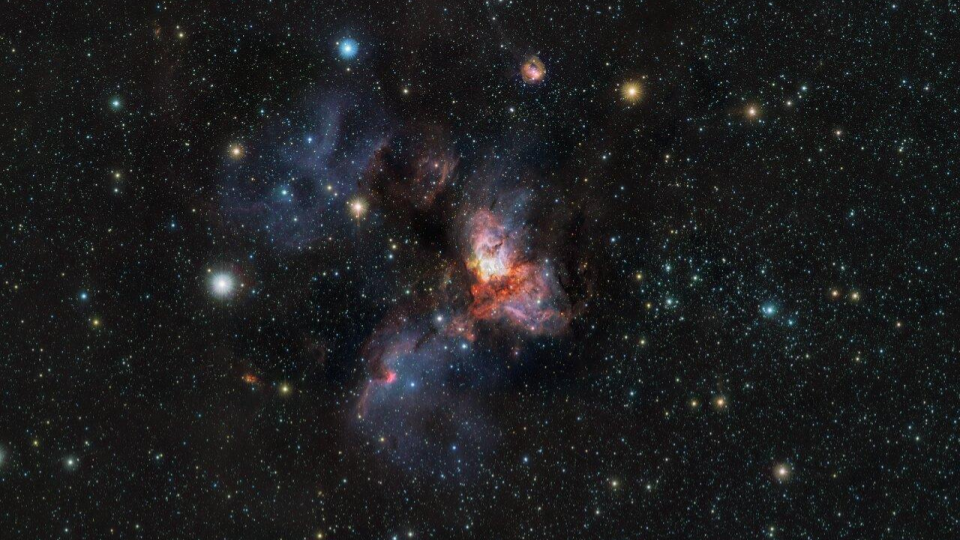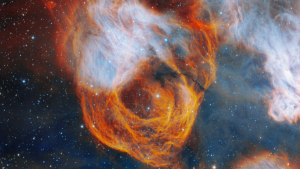
Our modern, highly efficient cameras and massive telescopes allow us to not only do massive surveys, they also allow us to see specific objects in previously unimagined detail. The 4-m Visible and Infrared Survey Telescope, or VISTA, in Chile recently completed a highly detailed mosaic of the RCW 38 star forming region. Just 5500 light years away, this system is less than a million years old. By studying its 2000 young stars, we can gain new insights into how stars and their surrounding solar systems form.
With even larger telescopes, we can see more distant star clusters, such as the NGC 2040 open star cluster. Located in the Large Magellanic Cloud, 160,000 ly away, this system is several million years old, and its most massive stars have already died, creating the system’s intricate structures with their explosions.
As we look throughout the sky we can find star clusters of myriad different ages that allow us to study stellar evolution the same way that class photos allow us to catch snapshots of human development. All the stars in each cluster are roughly the same age, and they are all made of the same stuff, so they generally only differ in mass.

Perhaps the most imaged star-forming region is the Orion Nebula. Even the JWST has taken its own crack at observing this system, and this giant orbiting scope has shown that new things are still waiting to be discovered even in this familiar nebula. Specifically, they found a number of rogue planets seeming to move freely without orbiting any stars. While there are ways to yeet planets from solar systems, new research finds that some of these planets are able to form where forming solar systems interact.
This new research appears in Science Advances and is led by Deng Hongping with lead author Zhihao Fu. Using computer simulations, they were able to explain both the frequency of the planetary-massed objects and how they so often appear in binary pairs. They explain that in close encounters between two disks, which occur at velocities of 2-3 km/s, gravity can cause bridges of material to sprawl between the systems, where it can then collapse into worlds.
According to team researcher Lucio Mayer, “This discovery partly reshapes how we view cosmic diversity. PMOs may represent a third class of objects, born not from the raw material of star-forming clouds or via planet-building processes, but rather from the gravitational chaos of disk collisions.”
